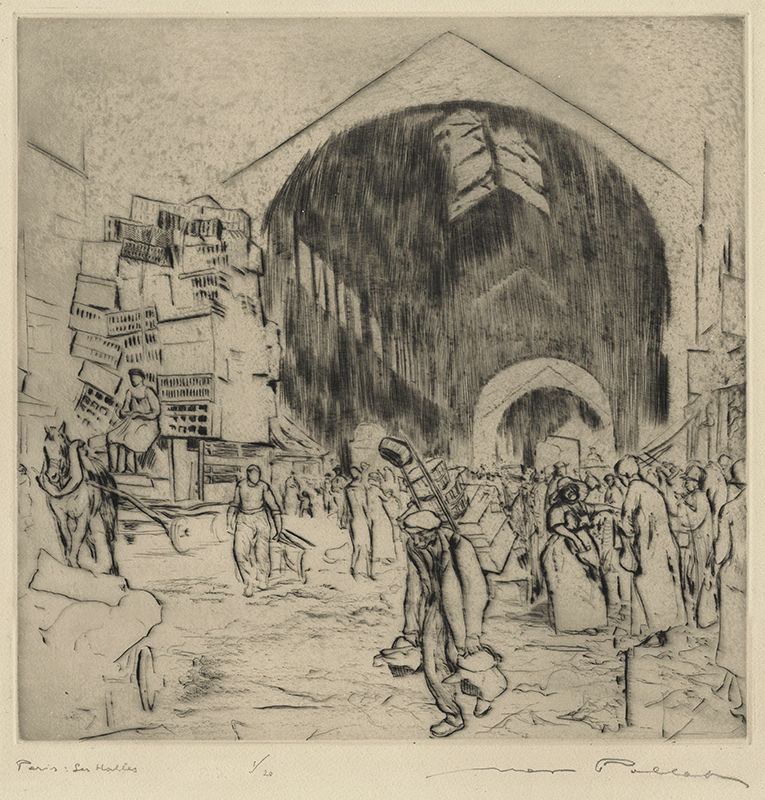Paris: Les Halles is a drypoint created 1925 by Max Pollak. It is pencil signed, titled and editioned 1/20. Les Halles was printed by the artist on a heavy buff paper and the platemark measures 12-7/16 x 12-3/8 inches. The reference for this work is Triton Art Gallery catalog, number 25.
Les Halles (known as the Belly of Paris) was the commercial heart of Paris. Les Halles was situated in the middle of Paris and was originally the central wholesale marketplace where farmers and other vendors brought their products to sell. This marketplace supplied Paris for 800 years before it was torn down in 1971.
The marketplace consisted of twelve high-ceiling pavilions of an avant-garde architecture constructed between 1854 and 1866. The glass and cast-iron pavilions were designed by the architect Victor Baltard. There were separate pavilions for meat, fish, dairy and vegetables. The volume of business was staggering and this success led to the downfall of Les Halles. With so many people traveling into the heart of Paris to shop at this central marketplace, bottlenecks became a major problem and the site was earmarked for destruction in the 1960s.
Author Emile Zola closely described this anthill of human activity in his 1873 realistic novel Le Ventre de Paris (The Belly of Paris).
Max Pollak, painter and printmaker, was born in Prague, Czechoslovakia in 1886. He was raised in Vienna and, in 1902, he entered the Vienna Academy of Art where he studied under William Unger and Ferdinand Schmutzer. In 1912, Pollak traveled to Italy, France, and Holland to study and paint. During the First World War, he was appointed painter of the Austrian Army.
He immigrated to the United States in 1927, living for a time on the east coast where he produced a series of color aquatints of New York, Cincinnati, and Detroit. His first exhibition was at the 57th Street Art Gallery in New York and he was commissioned by Theodore Dreiser in 1929 to illustrate his book, My City. In 1938, Pollak and his wife, Friedl, moved to San Francisco, California. Pollak was inspired by his new city and its environs and produced beautiful views of San Francisco Bay Area. Later travels included trips to Mexico and Guatemala.
Max Pollak was a member of the Chicago Society of Etchers and the California Society of Etchers. His work is represented in the collections of the Magnes Collection of Jewish Art and Life, Berkeley, California; the Jordan Schnitzer Museum of Art, University of Oregon, Eugene; the British Museum, London; the Metropolitan Museum of Art and the New York Public Library, New York; the Oakland Museum of California Art; the Fine Arts Museums of San Francisco, California; and the Smithsonian American Art Museum, Washington, D.C.



